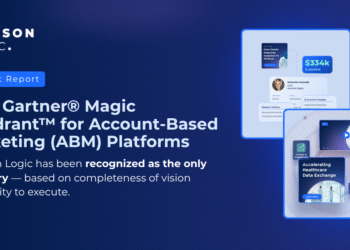10 Analyses You Can Do Today
1. Segmentation Analysis: Beyond Traditional Boundaries
Imagine segmenting clients not just by basic demographics but by complex behavioral patterns. We can unveil distinct client groups by using clustering techniques on attributes like revenue, industry, product preference, and geography. For instance, Cluster A might consist of high-revenue, tech-industry clients preferring software solutions in North America. In contrast, Cluster B could represent mid-revenue healthcare clients in Europe with a penchant for hardware. This detailed cluster analysis enables us to tailor our marketing efforts precisely.
Here’s an example of a series of prompts you can do within this analysis:
“Use clustering techniques, perhaps K-Means, to segment clients based on various attributes like revenue, industry, product preference, and geography. This can help in identifying distinct client groups with similar characteristics.”
(PAUSE)
“Please identify and analyze the two most high-impact clusters. What makes these customers high-performers?”
2. Cohort Analysis: Decoding Long-Term Value
We observe evolving behaviors and preferences by segmenting clients based on their first purchase date. This cohort analysis sheds light on client life cycles, revealing the longevity and value of different segments. Understanding these patterns is critical for refining acquisition strategies and maximizing client lifetime value.
Here’s an example of a series of prompts you can do within this analysis:
“Segment clients based on the time of their first purchase (acquisition cohort) and monitor their behavior over time. This will help understand the long-term value and behavior patterns of different client groups.”
3. Revenue Analysis: Industry and Product Line Insights
We gain clarity on market demands by dissecting revenue streams across industries and product lines. For instance, our analysis might reveal that the tech industry predominantly drives software sales, while healthcare clients lean towards hardware. Such insights are pivotal in aligning product development and marketing strategies with market trends.
Here’s an example of a series of prompts you can do within this analysis:
“Examine which industries (Tech, FINS, Healthcare) and product lines (Software, Hardware, Services) are generating the most revenue. This will help in identifying which client segments are the most lucrative.”
(PAUSE)
“Please provide a revenue trend using Linear Regression.”
(PAUSE)
“Please apply a predictive analysis to determine the next 12 months of revenue, and please apply the same linear regression trend line.”
4. Client Retention and Attrition Rates: A Roadmap to Loyalty
Analyzing retention and attrition across segments uncovers the drivers of client loyalty and risk. This information is invaluable for developing targeted retention strategies and identifying potential areas of client dissatisfaction.
Here’s an example of a series of prompts you can do within this analysis:
“Analyze the retention and attrition rates across different client segments, such as industry, geography, and product line. This will give insights into which segments have the highest loyalty and others that are at risk.”
(PAUSE)
“Are there any trends in attrition during the period of this analysis?”
5. Sales Performance Analysis: The Quest for Excellence
By evaluating sales performance in terms of acquisition, retention, and revenue, we can identify the stars of our sales team. A composite score combining these aspects helps in recognizing those who are not just closing deals but building lasting client relationships.
6. Geographical Analysis: Uncovering Regional Dynamics
Understanding which regions are most lucrative and loyal is crucial for geographical strategy planning. This analysis could reveal untapped markets or regions requiring more focused engagement.
7. Time Series Analysis: Revenue and Client Dynamics Over Time
We can visualize how client spending, acquisition, and attrition evolve through linear regression trend lines. This temporal view is essential for anticipating market shifts and aligning strategies accordingly.
8. Predictive Analysis: Forecasting the Future
Utilizing statistical models, we can predict future trends in client behavior, revenue generation, and attrition risk. Revenue forecasting, for instance, empowers us to allocate resources efficiently and set realistic targets.
9. Cross-Selling and Up-Selling: Maximizing Client Potential
Analyzing purchase patterns reveals opportunities for cross-selling and up-selling, particularly in segments with low product penetration. This strategic approach enhances client value and diversifies revenue streams.
10. Comparative Analysis: Benchmarking Success
Comparing different cohorts in revenue generation, growth, and attrition helps identify the most successful segments. This benchmarking is key to understanding what works and replicating that success across other segments.
Conclusion: The New Frontier in B2B Marketing
In conclusion, Generative AI, like ChatGPT Plus, is not just a tool; it’s a paradigm shift in how we approach B2B marketing and sales data. By embracing its capabilities, we can uncover previously unattainable insights, leading to more informed, strategic decisions. The future is not just about data analysis; it’s about intelligent, predictive insights that drive growth and innovation. Let’s step into this new era with confidence and curiosity, ready to redefine the boundaries of what’s possible in B2B marketing and sales.

















